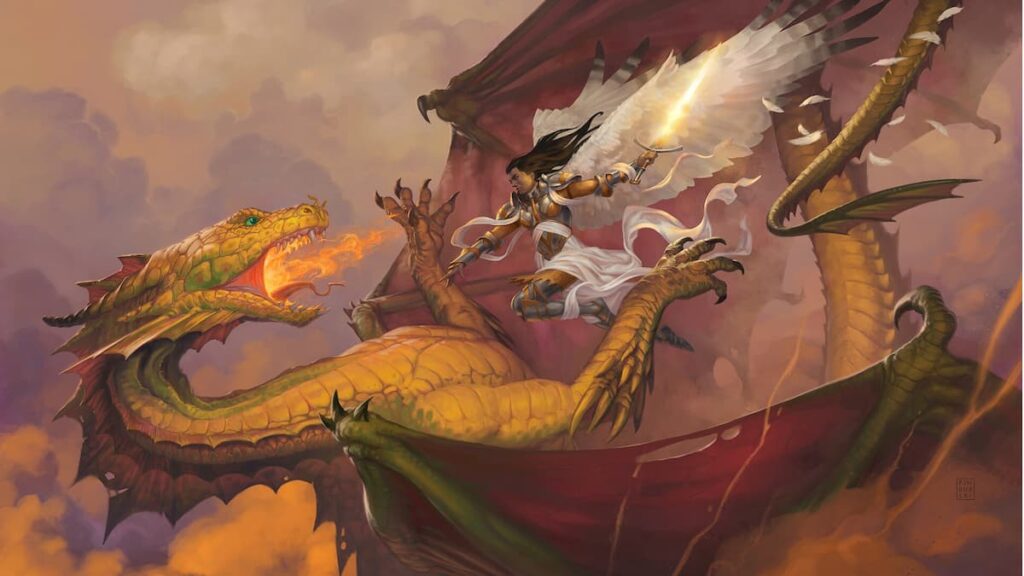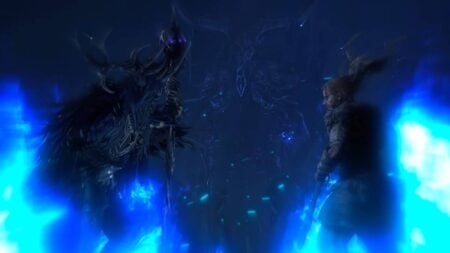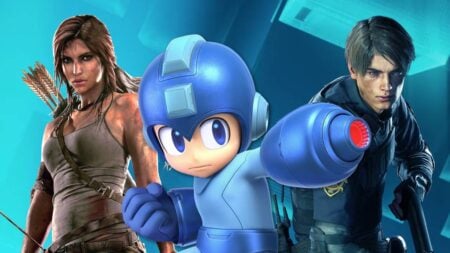Skip To...
Magic: The Gathering is the best game ever made. That’s my take. It may or may not count as a hot take for you, but I’ll do my best to make a case as to why you should take my word for it. There are so many ways to play this wonderful card game and so many ways to express yourself as you do. Importantly for those intimidated at the thought of jumping in, it’s much easier to get involved than you might think.
Editor’s Note: This article was written by guest contributor Steve Vrooman.
Planned Creativity?
Magic is a game in which each player builds their own deck from their collection and competes with it. That core idea was a revolution in game design when it hit the scene in 1993. Although numerous games have since come along that were inspired by that, including the ever-popular Pokémon and Yu-Gi-Oh!, Magic was the first.
If you haven’t played this sort of game before (maybe you collect Pikachu cards but don’t know the rules, like a lot of people I know), you probably want to know the appeal of them. For me, they allow planned creativity in a way that other games simply do not.
This was what I experienced when I first saw the game back in 1995. My friend was playing against a black deck (each color in Magic tends to have certain pros and cons) with creatures, specifically Hypnotic Specters. Those creatures made you discard some of your cards when they attacked, which was very viscerally annoying. It’s one thing to do “damage” but another to take my cards out of my hands. My buddy’s deck was green, and we were just hoping to find our giant Scaled Wurms to turn the tide. As a chess player at the time, what got me was that each of them made a deck to fit a kind of theme that matched their style.
As the decades went by and I started teaching game design at university, I came to understand that a key lever for game design is managing how players make meaningful choices. Candyland gives you zero choices; Dungeons and Dragons give you infinite, and Magic just hit a sweet spot for me. I design my deck, and it’s mine. It can be wacky, serious, janky or sweaty, and we can compete. Lots of decisions, with just enough randomness to create a good story. Planned creativity.
Not everyone is into either of those elements. Some people don’t like planning. They want to sit at a table or video game console and just see what happens, take their mind off their troubles and chill out. Others don’t like the creativity element. They like that chess has the same pieces on the same spots, that Go uses only two pieces, that there are only four suits of playing cards, that every version of Monopoly, whatever skin is over it (Monopoly: D-Day Edition, anyone?), always has the highest value property in the Boardwalk spot on the board.
For me, the planned creativity of Magic: The Gathering is about that mix of strategy and almost light roleplay, and there’s nothing else quite like it.
Wait, There are How Many Cards?
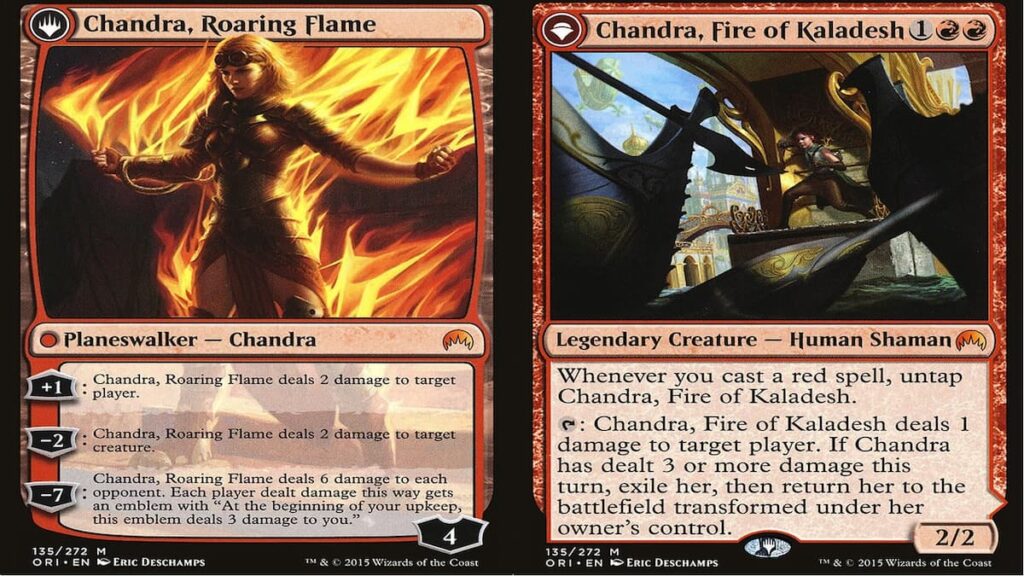
As of 2024, there are just shy of 30,000 unique Magic: The Gathering cards, not counting the hundreds of thousands of different versions and styles. That’s about the same as Pokémon and Yu-Gi-Oh! combined. That means it’s the most complex game ever designed. The amount of options and moving parts in deck construction alone means there are more decks possible than, well, someone starts talking about atoms in the universe, and I just kind of get lost, if I’m honest.
But wait, you say! What’s fun about that?
Ah, well, for any game that has a competitive scene, like Magic, the players begin to find the best decks in various formats, often defined by limitations on that pool of cards (say, last three years, since 2014, etc.). But with that many cards in Eternal formats, which let you play cards from across the history of the game, your creativity is unleashed.
The most popular casual way to play Magic, Commander, is a multiplayer Eternal format where your deck is helmed by a special character, the commander. Almost that entire card pool is at your disposal, and you can just keep brewing decks at whatever power level you like. And with that many choices, it’s easy to build thematic decks that are fun for you, from ridiculous memes to high power to decks that highlight unique commanders to decks that seek to connect each card to a larger common idea.
For me, the pleasure of Magic: The Gathering is often in the discovery that this allows. As you get new cards, you can think about your collection what goes with what, and what would happen if you mixed these two things, etc.
But of course, if that’s too much creativity for your hobby style, you can always find decklists across Magic’s rich online communities, including Discords and subreddits, as well as from the daily content on Twitch, YouTube, blogs, and podcasts. And for some of us, that experience is fun and enriching (with a few salty moments sprinkled in!).
But the Rules. . .
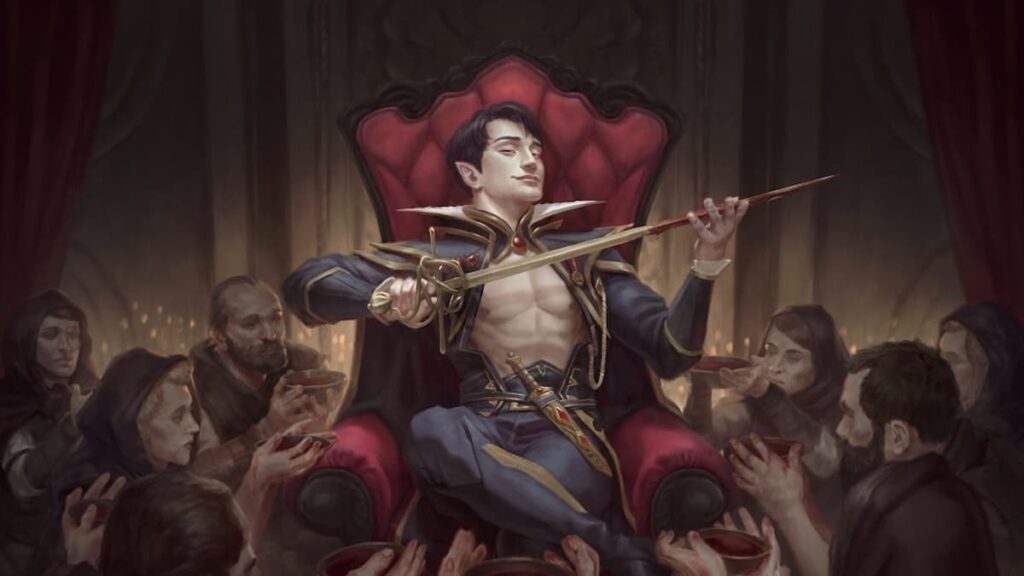
I teach introductory game design classes (among other things), and part of that experience is having my students learn to play a lot of games so they can learn about how they learn games, how that’s different for different people, and how what they can learn from all of that helps to design better games and better rules delivery. The classic problem in tabletop game design is that better games in terms of things like deep strategy, balanced gameplay, narrative immersion, and replayability often require a pretty difficult-to-learn set of rules.
This is solved a bit in video games, where tutorial levels long ago replaced the fat rulebooks that accompanied CD-ROMs in the 90s. You can have fun as a player, while slowly experiencing a growing rule set. Tabletop games, especially the kind with game boards, have a much harder time implementing this, but constructible card games like Magic have an interesting middle road.
Because there are so many game pieces (all the cards), Magic: The Gathering is just about as complicated as a game can be, writ large. There are so many rules and mechanics and card types and strange interactions between cards. But if I’m teaching you how to play, we can limit the decks and cards down to what will be fun for you while reducing all the noise down to the basics, which are not that hard to master. I’ve taught hundreds of people to play Magic, and what’s great about all the variety is that I can customize those early game experiences to how you like to learn and what you find fun. Even better, there are often ways to take the kinds of simpler learner decks and add just enough that a new player can compete with friends or at the local game store, at least a little bit, while still preserving what they grew to like about the game.
I learned to play Magic with a green creature deck that cast a lot of small elves to help cast my big giant wurms, mammoths, and treefolk. It was fun at kitchen tables, but it was nowhere near good enough to play at the local store. When I started wanting to do that, my friends helped me learn how to add elements that would make my deck more complex and more strategically viable while still preserving what I loved about the deck’s style. The simple version of that was that we added in a second color (black, my old nemesis), not for those Hypnotic Specters, but for something else the necromantic color brought to the table: raising the dead, zombies, and the like. And that was my favorite deck for a long time. It merged my interest in fantasy with my interest in horror, and playing that deck felt a bit like revealing a bit of who I was while also playing a game.
That felt way more satisfying than picking the racecar in Monopoly or skin in an FPS.
More Ways to Play
Although Magic has been played digitally with Magic Online for more than twenty years, Magic Arena was fully unleashed in 2019, offering a snappier and more visually fun environment for online Magic play. So many people came to Magic during that time of frightened pandemic homebound life because Arena was there, with tutorial experiences that could get you ready to play quickly. And all of us, sad to not be able to play Commander at our local game stores, found our way to online Magic.
And a lot of us then got our first introduction to Draft.
Drafting had been around for a long time in Magic, but it was always an intimidating thing to try to join in person, at least for me. Arena made it easier to take the plunge.
Let’s back up. What is Draft?
Unlike traditional “Constructed” Magic, where you build your deck from cards in your collection, in Draft, you build a deck entirely out of cards you open in packs during the drafting session. You crack a new booster pack, take a card, and pass the cards to your neighbor. You pick up the pack passed to you, and so forth. Games such as Sushi Go! and 7 Wonders which you may have played are also based on this type of gameplay.
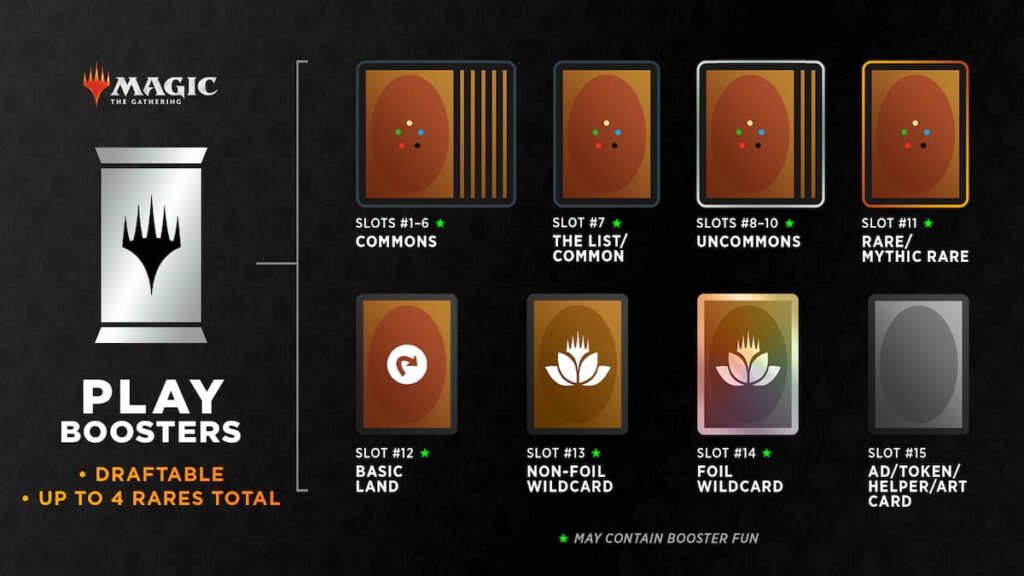
This is a very different way to play the game, and many of us love the tension and the constantly shifting decisions you need to make as you pass cards and adapt to what’s passed to you. Plus, you’ll see cards that you really want for one of your home decks, but it may not fit with the deck you’re trying to draft. There’s a lot of stuff going on, and being able to try it out online was quite fun.
I liked it at first because it leveled the playing field. It doesn’t matter if you have a stash of powerful cards lurking in your boxes at home. All that matters is what you open right now, and there’s every chance I can be just as good as you.
If that sounds like you, you can play Draft with just your friends, at the local game store, or online. You can also check out Draftsim.com to practice your skills for free on the Draft Simulator and use its Arena Tutor to take that help with you to Magic Arena.
Final Thoughts
Thirty years after it started, with so many cards and so many ways to play, it’s impossible to give you a full sense of why Magic: The Gathering is the best game ever made. All I could do is walk you through a few of the ways I try to make sense of what has been my favorite pastime since I first saw people shuffle up and play all that time ago.
For me, it is the perfect blend of hardcore gaming and creative fun. I love playing with friends and strangers alike. But I also like just sitting with my collection of cards sometimes, looking to find some undiscovered synergy or connection or interaction that could be the start of something powerful, maybe, but certainly something weird and fun that will get a reaction from others who also know what it feels like to make something new in the midst of something old.
And there aren’t many hobbies out there where you can do that so deeply as you can in Magic.

